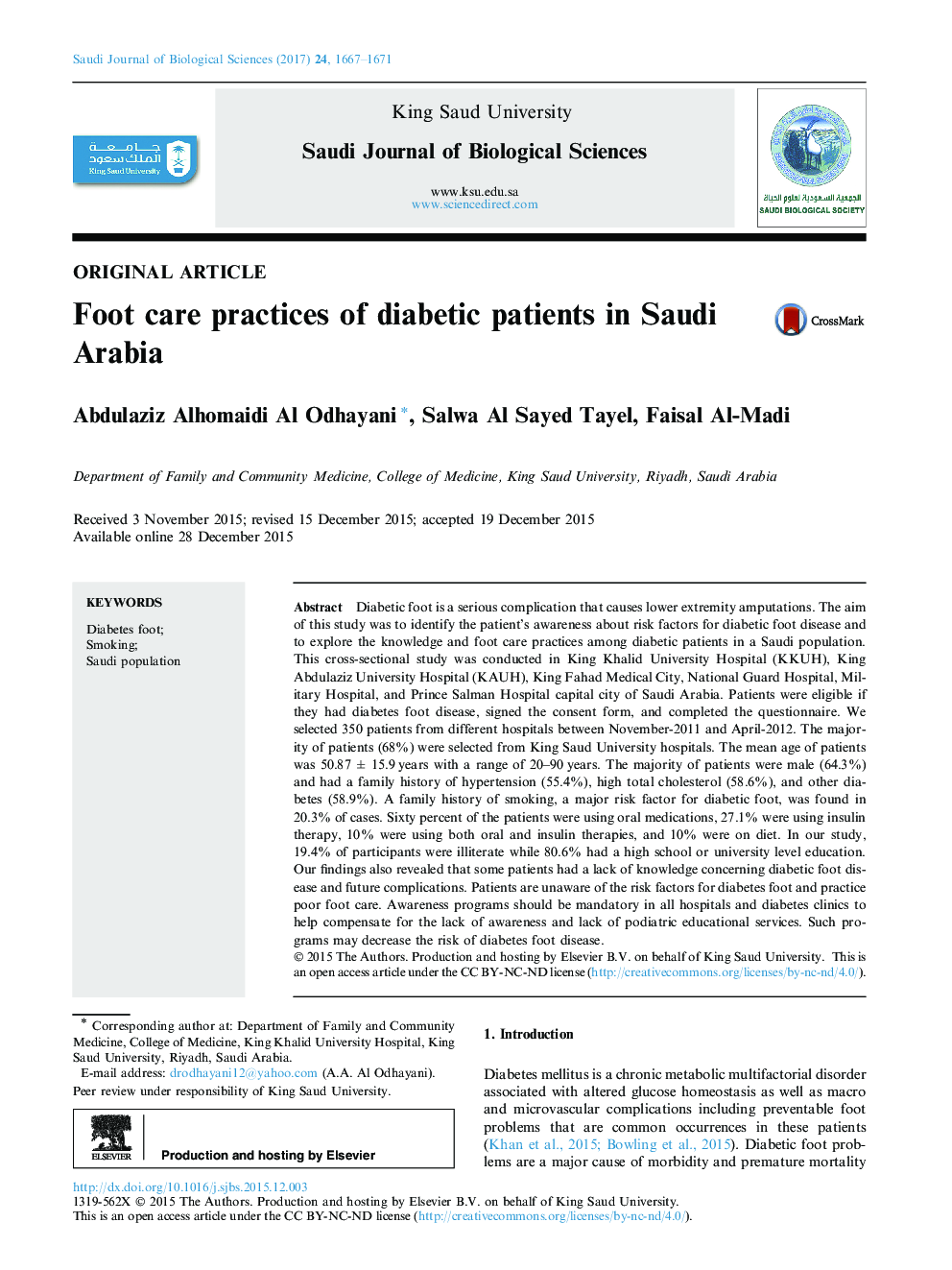| کد مقاله | کد نشریه | سال انتشار | مقاله انگلیسی | نسخه تمام متن |
|---|---|---|---|---|
| 5745428 | 1618662 | 2017 | 5 صفحه PDF | دانلود رایگان |
Diabetic foot is a serious complication that causes lower extremity amputations. The aim of this study was to identify the patient's awareness about risk factors for diabetic foot disease and to explore the knowledge and foot care practices among diabetic patients in a Saudi population. This cross-sectional study was conducted in King Khalid University Hospital (KKUH), King Abdulaziz University Hospital (KAUH), King Fahad Medical City, National Guard Hospital, Military Hospital, and Prince Salman Hospital capital city of Saudi Arabia. Patients were eligible if they had diabetes foot disease, signed the consent form, and completed the questionnaire. We selected 350 patients from different hospitals between November-2011 and April-2012. The majority of patients (68%) were selected from King Saud University hospitals. The mean age of patients was 50.87 ± 15.9 years with a range of 20-90 years. The majority of patients were male (64.3%) and had a family history of hypertension (55.4%), high total cholesterol (58.6%), and other diabetes (58.9%). A family history of smoking, a major risk factor for diabetic foot, was found in 20.3% of cases. Sixty percent of the patients were using oral medications, 27.1% were using insulin therapy, 10% were using both oral and insulin therapies, and 10% were on diet. In our study, 19.4% of participants were illiterate while 80.6% had a high school or university level education. Our findings also revealed that some patients had a lack of knowledge concerning diabetic foot disease and future complications. Patients are unaware of the risk factors for diabetes foot and practice poor foot care. Awareness programs should be mandatory in all hospitals and diabetes clinics to help compensate for the lack of awareness and lack of podiatric educational services. Such programs may decrease the risk of diabetes foot disease.
Journal: Saudi Journal of Biological Sciences - Volume 24, Issue 7, November 2017, Pages 1667-1671
